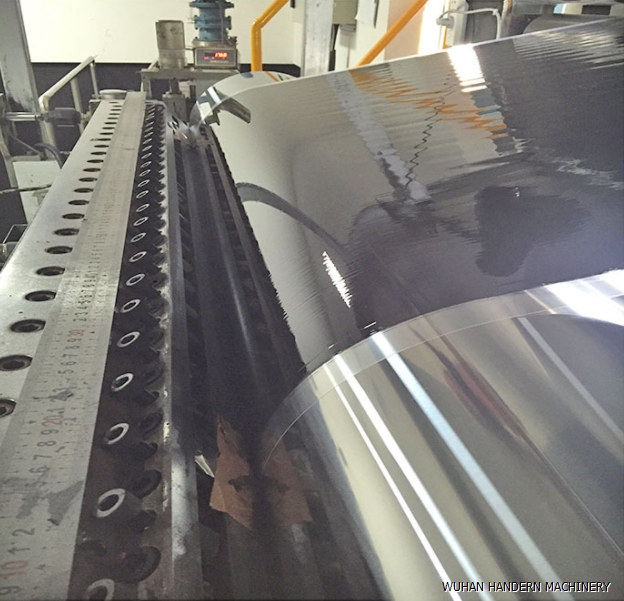What production processes are used in the graphene superconducting sheet production line
DATE:2024/11/5 10:56:07 / READ: / SOURCE:This station
The production line of graphene superconducting sheets adopts multiple advanced production processes, and the selection of these processes directly affects the quality, performance, and application of the final product. Here are some main production processes and their characteristics:
 1. Mechanical Exfoliation Method
1. Mechanical Exfoliation Method
The mechanical exfoliation method was originally used to prepare graphene. This method usually uses tape or blades to mechanically peel off the surface of graphite blocks, thereby obtaining a single or several layers of graphene. This process is simple and cost-effective, but it is not efficient enough for mass production of graphene sheets. However, this method is still used for laboratory research and small-scale production because it can obtain high-quality graphene.
2. Chemical Vapor Deposition (CVD)
Chemical vapor deposition is currently one of the most commonly used graphene production processes. In the CVD process, gas precursors (such as ethylene or methane) react with catalytic metal substrates (such as copper or nickel) at high temperatures, ultimately forming high-quality graphene layers. This method can achieve the growth of large-area, high-quality graphene and is suitable for industrial large-scale production. Meanwhile, graphene sheets prepared by CVD have good uniformity and adhesion, which can meet many application requirements.
3. Liquid phase exfoliation method
The liquid-phase exfoliation method disperses and exfoliates graphite material into a single layer or several layers of graphene by ultrasonic treatment in a solvent. This method is suitable for large-scale production because the quality and number of graphene layers can be controlled by selecting different solvents and concentrations. However, the graphene sheets obtained by liquid-phase exfoliation method usually have lower quality, but their properties are still attractive in certain applications.
 4. Redox method
4. Redox method
The oxidation-reduction method involves oxidizing graphite to graphite oxide, and then reducing it to graphene under reducing conditions. The advantage of this method is that it can be processed at relatively low temperatures and can be produced on a large scale, while also being suitable for composite with other materials. The graphene obtained by this method also has certain efficacy, but the reduction process may lead to defects and structural changes in graphene.
5. foam method
The foam process is a relatively new method for producing graphene. The sol of graphene is deposited in foam to form foam like graphene sheet. This method can increase the specific surface area of graphene and reduce production costs.
6. Thin film growth method
The thin film growth method can be used to grow graphene thin films on substrates. By adjusting the growth temperature, atmosphere, and other conditions, graphene films with different thicknesses, textures, and electronic properties can be obtained.
7. Post processing technology
After producing graphene superconducting sheets, the post-treatment process is also crucial. These processes include heat treatment, solvent cleaning, and chemical modification, with the aim of improving the electrical properties of graphene, increasing active sites, or enhancing its stability and processability.

The mechanical exfoliation method was originally used to prepare graphene. This method usually uses tape or blades to mechanically peel off the surface of graphite blocks, thereby obtaining a single or several layers of graphene. This process is simple and cost-effective, but it is not efficient enough for mass production of graphene sheets. However, this method is still used for laboratory research and small-scale production because it can obtain high-quality graphene.
2. Chemical Vapor Deposition (CVD)
Chemical vapor deposition is currently one of the most commonly used graphene production processes. In the CVD process, gas precursors (such as ethylene or methane) react with catalytic metal substrates (such as copper or nickel) at high temperatures, ultimately forming high-quality graphene layers. This method can achieve the growth of large-area, high-quality graphene and is suitable for industrial large-scale production. Meanwhile, graphene sheets prepared by CVD have good uniformity and adhesion, which can meet many application requirements.
3. Liquid phase exfoliation method
The liquid-phase exfoliation method disperses and exfoliates graphite material into a single layer or several layers of graphene by ultrasonic treatment in a solvent. This method is suitable for large-scale production because the quality and number of graphene layers can be controlled by selecting different solvents and concentrations. However, the graphene sheets obtained by liquid-phase exfoliation method usually have lower quality, but their properties are still attractive in certain applications.

The oxidation-reduction method involves oxidizing graphite to graphite oxide, and then reducing it to graphene under reducing conditions. The advantage of this method is that it can be processed at relatively low temperatures and can be produced on a large scale, while also being suitable for composite with other materials. The graphene obtained by this method also has certain efficacy, but the reduction process may lead to defects and structural changes in graphene.
5. foam method
The foam process is a relatively new method for producing graphene. The sol of graphene is deposited in foam to form foam like graphene sheet. This method can increase the specific surface area of graphene and reduce production costs.
6. Thin film growth method
The thin film growth method can be used to grow graphene thin films on substrates. By adjusting the growth temperature, atmosphere, and other conditions, graphene films with different thicknesses, textures, and electronic properties can be obtained.
7. Post processing technology
After producing graphene superconducting sheets, the post-treatment process is also crucial. These processes include heat treatment, solvent cleaning, and chemical modification, with the aim of improving the electrical properties of graphene, increasing active sites, or enhancing its stability and processability.
Author:admin




